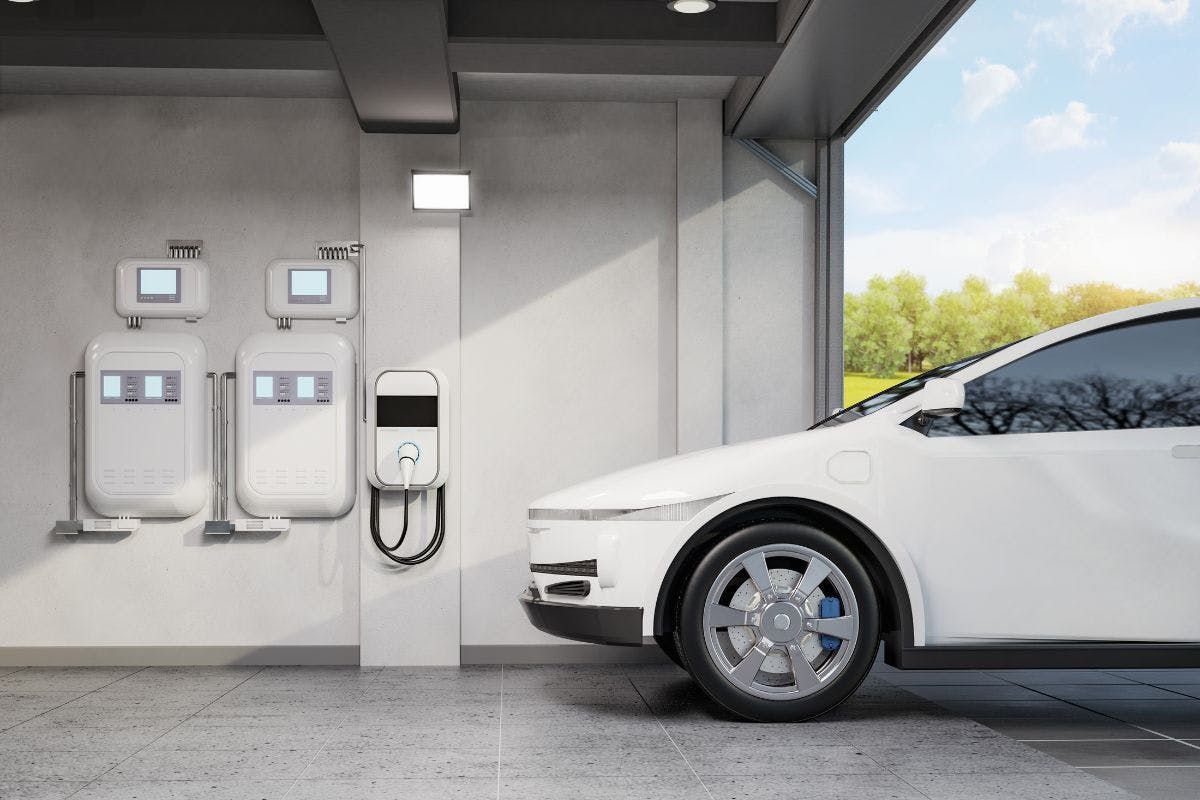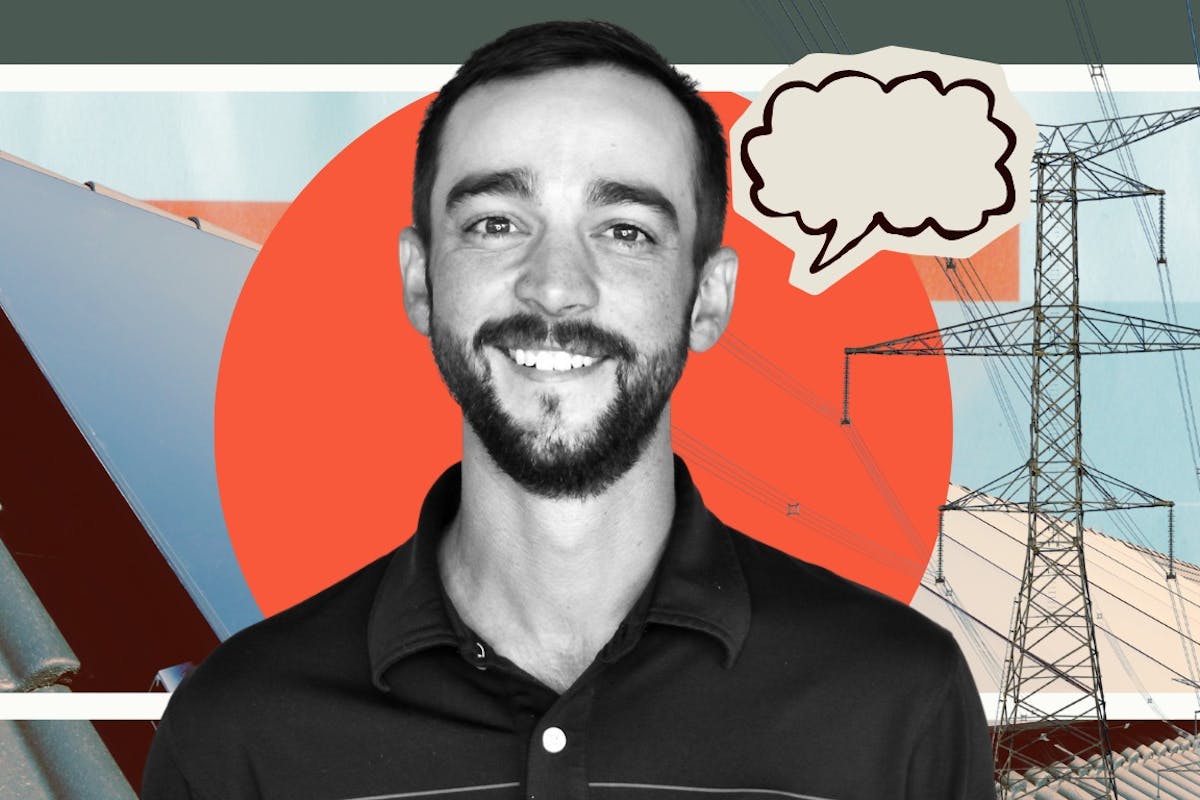Virtual Power Plants: How They Can Save You Money and Support the Grid
Last edited

Author
Andrew Blok
Electrification and Solar Writer and Editor

Editor
Andrew Giermak
Solar and Electrification Writer and Editor

Demand for energy is up and increasing around the world. In the United States, the US Energy Information Administration projects 2% growth in 2025 in the US and 3% growth in 2026 after decades of relatively flat demand. As new data centers and artificial intelligence use require more electricity, and as more homes, businesses, and transportation get electrified, grid operators need new ways of balancing supply and demand.
Virtual power plants (VPPs) are an increasingly impactful solution. VPPs aggregate energy devices like home batteries, smart thermostats, smart plugs, and more into coordinated fleets that can reduce demand or increase supply of electricity on the grid. VPP programs in you area could offer you a way to put devices in your home to work and save you a bit of money along the way.
See how much you can save by going solar with Palmetto
What Are Virtual Power Plants?
A virtual power plant (VPP) is a collection of small, distributed electricity production, consumption, and storage devices aggregated into a single system to support the grid's needs.
These devices include solar batteries, smart thermostats, electric vehicles, and appliances. When they work in concert, they can provide the grid with electricity or reduce demand in a flexible and meaningful way.
(Your utility may offer bill credits for reducing your demand or send out texts asking you to raise your thermostat a few degrees during the hottest parts of the day. Virtual power plants operate on the same idea but make the process automatic and, therefore, more reliable.)
How Do Virtual Power Plants Work?
VPPs consist of a bunch of smaller energy devices working together to reduce demand (by shifting a temperature setting or when they run, for example) or add power (by discharging their stored energy) to the grid.
Although participants in virtual power plants maintain ownership of their equipment, VPPs are controlled by aggregators, private companies, and other grid operators who can utilize enrolled resources in terms set out by a contract agreement.
For example, if you enroll your solar battery storage in a VPP, your stored power may be automatically discharged to the grid during peak demand hours, resulting in direct compensation or credits on your energy bills. Most VPP agreements have preset hours for discharges, and also allow participants to opt out of energy sharing during select events.
The Palmetto app gives you real-world estimates on how much electricity home upgrades like smart thermostats, smart plugs, batteries, and more, can save you, with or without a VPP available.
Virtual power plants vs. microgrids
Microgrids and virtual power plants are two separate things. Microgrids can separate from the larger grid and operate independently from it. When the power goes out, a microgrid has the energy generation and/or storage to keep the lights on.
See how much you can save by going solar with Palmetto
Benefits of Virtual Power Plants
Linking together distributed energy resources, virtual power plants bring strength in numbers that deliver many benefits to consumers and society at large.
Demand reduction: Virtual power plants can ease stress on the grid by reducing peak demand. Because a utility must match demand with supply, it may need to turn on more expensive (and often dirtier) power plants to meet peak demand. By reducing that peak, VPPs can reduce cost and carbon on the grid.
Supply increase: VPPs made up of batteries can add energy to the grid. Depending on the number of batteries, they can rival the electricity output of gas power plants.
Decarbonization: Virtual power plants can help utilities decarbonize their electricity by reducing demand for it. VPPs that utilize battery storage can get more solar energy on the grid, too.
Financial incentives: Most importantly, virtual power plants can help participants save and make money when they share their energy resources with the electricity grid. Because device owners give up some control, aggregators typically compensate them when they call events and adjust the owner’s thermostat, switch off their smart plug, or discharge their battery.
Should You Join a VPP?
Joining a VPP can earn you cash or rewards for what is typically a minor inconvenience or unnoticeable.
The benefit to you and the grid will vary depending on the devices you enroll and the policies of the aggregator. Rewards are typically modest, ranging from one dollar an event (about $30-$50 per year) to over $300 a year. Palmetto's offering in parts of Texas can earn you $40/month in bill credits, for allowing your battery to support the grid. Be sure you understand the policies and your potential to save before signing up.
One potential barrier is the availability of programs. An aggregator needs to operate in your area. While availability has grown, programs aren’t available everywhere.
The all new Palmetto app is the easiest way to save energy and money. Completing fun, energy-saving challenges earns you discounts on devices that can save you more energy, including batteries, smart thermostats, and more.
Interested in solar or storage? See what you could save today with Palmetto's Savings Maximizer.
See what solar can do for you:
Frequently Asked Questions
What is a virtual power plant?
A virtual power plant is a collection of small energy devices — from smart thermostats to heat pumps to home batteries — that are operated as one by aggregators in order to reduce demand or supply energy to the grid.
How does a virtual power plant make money?
Virtual power plants and the aggregators that run them make money by selling demand reduction to grid operators. They pass some of that on to individual device owners in exchange for some control over their devices.
How is a virtual power plant good for the environment?
By joining a VPP, you can make a positive impact on the environment as more clean energy supplied into the larger power grid reduces the use of fossil fuels.



